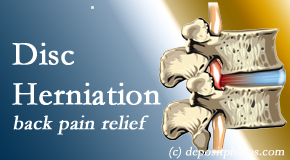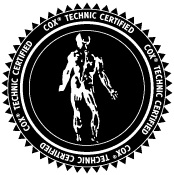Johnson Chiropractic Treats Disc Herniation Pain
Disc herniations can bring about back pain and leg pain for some. Johnson Chiropractic welcomes those back pain sufferers due to a disc herniation. Gentle, relieving treatment without surgery is what we deliver. Richmond back pain patients find relief when they find us!
DISC HERNIATION: Size, Weight, Sleep
What matters when a disc produces back pain? Its size? Its weight? Its effect on quality of life? Spinal researchers have produced data and published that what the pain-producing disc looks like on imaging doesn’t really matter. The shape and size of an intervertebral spinal disc’s bulging nucleus pulposus has no link to a what a patient’s symptoms may be or how a patient feels. (1) The weight of a disc fragment did not relate to the duration of symptoms or severity of pre- or post-operative leg pain nor post-operative leg pain or back pain improvement, the percentage of spinal canal occupation, herniation classification, or vertebral level. The size of the lumbar disc herniation did not have much effect on clinical outcomes. (2) Chronic lower back pain and sciatica due to lumbar disc herniation adversely impacted sufferer’s quality of sleep. Treatment positively impacted patient perception of pain in visual analog scale (VAS) scores as well as in the PSQI Pittsburg Sleep Quality Index scores. (3) Pain lessening chiropractic treatment of a pain-producing disc necessitates decreasing the risk of recurrent back pain episodes as well as decreasing the pain of the current episode.
MANAGING BACK PAIN AND RISK OF ITS RECURRENCE
Once you’ve felt back pain related to a disc herniation, you don’t want it again! Johnson Chiropractic gets that and wants you to know that managing - as conservatively as possible - the disc herniation is more accurate than curing it. 6.05% of lumbar discectomy surgery patients had a re-current disc herniation. What brought that on? On their own, factors like age, BMI, current smoking status, heavy lifting, degenerative facet joint disease, operation time, and the time it took to ambulate after surgery influenced the risk of recurrent disc herniation. Combined, older age, male sex, high body mass index (BMI), and early ambulation were significant factors in the experience of a recurrent lumbar disc herniation. Managing weight, not lifting heavy items, and exercising were suggested risk reducers. (4) One new study reported that the amount of sedentary time probably did not increase the risk of a new bout of low back pain as much as the amount and type of physical activity. (5) Pain relief happens more as a roller coaster than a straight hill to pain relief. A disc herniation is like a bruise on an apple making the apple (and by comparison, the spine) never quite the same again. That’s where Johnson Chiropractic comes in with a treatment plan that makes sure you know all there is to know about a disc herniation, how to nutritionally take care of it, how to exercise to return it to strength and keep it strong, and how to perform activities of daily living to avert (re)injury. A recent systematic review of approaches to managing back pain listed 10 approaches: manipulation/mobilization, psychological/behavioral, advice to stay active/bed rest, reassurance, antidepressants, NSAIDS, opioids, muscle relaxants, and paracetamol. (6) Johnson Chiropractic supports walking, moving, careful lifting, and especially being treated with gentle, safe, effective Cox® Technic spinal manipulation!
CONTACT Johnson Chiropractic
Listen to this PODCAST with Dr. Robert Patterson on The Back Doctors Podcast with Dr. Michael Johnson as he describes the realistic expectations back pain patients can have with The Cox® Technic System of Spinal Pain Management.
Make your Richmond chiropractic appointment today. Disc herniation sufferers are invited to our practice for relief and a plan for controlling its future impact on life.


